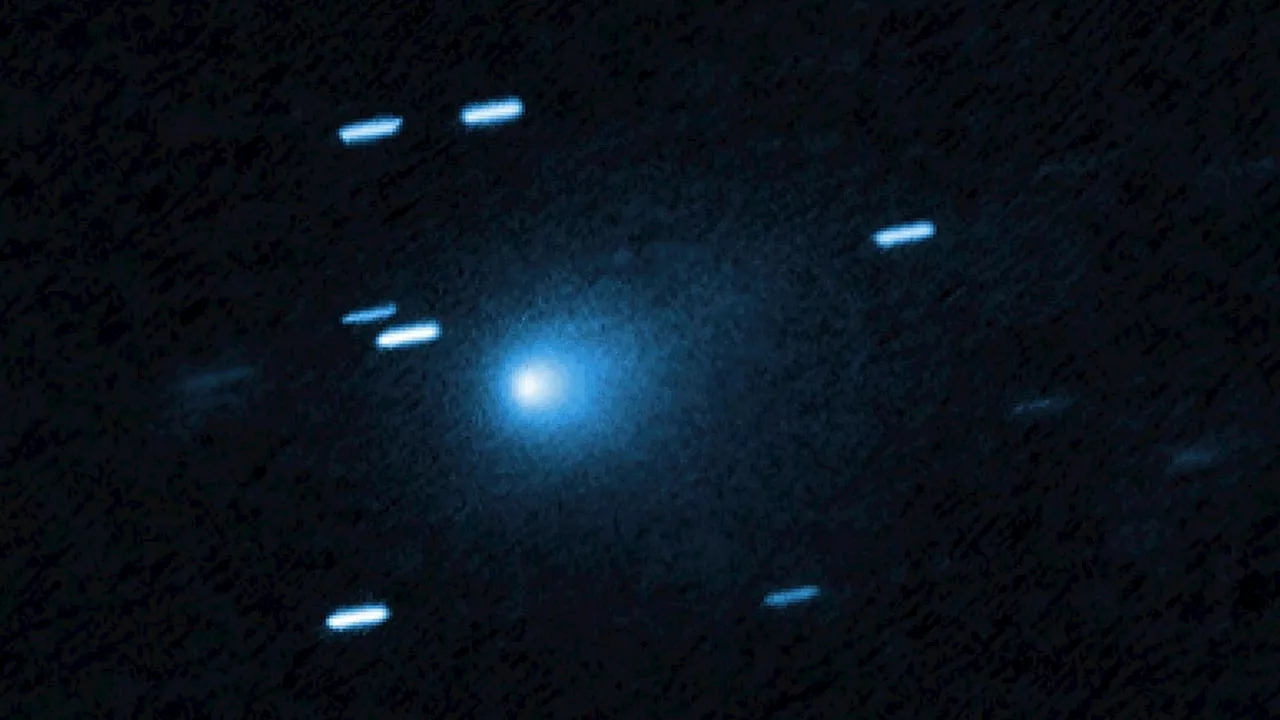Science
Scientists Investigate Unusual Behavior of Interstellar Object 3I/ATLAS

Scientists are investigating the curious behavior of interstellar object 3I/ATLAS, which has exhibited unexpected characteristics following its perihelion, or closest approach to the Sun, on October 29, 2023. This object, which came within 203 million kilometers of the Sun, has shown signs of non-gravitational acceleration and a notable lack of a cometary tail, raising questions about its composition and origin.
Dr. Avi Loeb, a theoretical physicist at Harvard University, reported that 3I/ATLAS has become significantly bluer than the Sun, which is atypical for comets. The absence of a tail, typically expected as such objects approach the Sun, has intrigued researchers. New observations reveal a blob of light instead of the anticipated cometary features, prompting further inquiry into whether this object is a natural formation or something more complex.
The peculiar nature of 3I/ATLAS has led to speculation regarding its potential connection to the famous ‘Wow’ signal, a mysterious radio signal detected in 1977. “It came from the same direction as the ‘Wow’ signal, and the question is whether they are related,” Dr. Loeb stated. “There are lots of anomalies that should make us curious.”
While some scientists are exploring the idea that 3I/ATLAS could be a technological object, Dr. Ken Gayley, an astronomy professor at the University of Iowa, emphasizes the importance of maintaining a natural origin hypothesis. “We would always start off with the assumption that these are natural objects,” he explained. “If there is strong evidence that they are not, then we might be led to another direction. For now, there’s still plenty of evidence that they are potentially just completely natural objects.”
As 3I/ATLAS approaches its closest point to Earth on December 19, 2023, scientists are eager to gather more data. This event presents an opportunity to gain insights into the conditions of other star systems and their formation processes. “That’s six days before Christmas,” Dr. Loeb remarked, humorously hoping for a safe observation period. “The last thing we want is for it to send a probe to planets like Earth.”
NASA notes that comets are typically named after their discoverers, in this case, the team behind the Asteroid Terrestrial-impact Last Alert System survey telescope located in Rio Hurtado, Chile. The letter “I” represents “interstellar,” indicating that this object originated outside our solar system. 3I/ATLAS is the third known interstellar object, following 1I/Oumuamua in 2017 and 2I/Borisov in 2019.
The scientific community remains vigilant as they continue to monitor 3I/ATLAS and its behavior, hoping to unlock the secrets of this intriguing interstellar visitor.
-

 World3 weeks ago
World3 weeks agoGlobal Air Forces Ranked by Annual Defense Budgets in 2025
-

 World3 weeks ago
World3 weeks agoMass Production of F-35 Fighter Jet Drives Down Costs
-

 Science3 weeks ago
Science3 weeks agoTime Crystals Revolutionize Quantum Computing Potential
-

 World3 weeks ago
World3 weeks agoElectrification Challenges Demand Advanced Multiphysics Modeling
-

 Top Stories3 weeks ago
Top Stories3 weeks agoNew ‘Star Trek: Voyager’ Game Demo Released, Players Test Limits
-

 Top Stories3 weeks ago
Top Stories3 weeks agoDirecTV to Launch AI-Driven Ads with User Likenesses in 2026
-

 Lifestyle3 weeks ago
Lifestyle3 weeks agoDiscover Reese Witherspoon’s Chic Dining Room Style for Under $25
-

 Business3 weeks ago
Business3 weeks agoGold Investment Surge: Top Mutual Funds and ETF Alternatives
-

 Entertainment3 weeks ago
Entertainment3 weeks agoFreeport Art Gallery Transforms Waste into Creative Masterpieces
-

 Health3 weeks ago
Health3 weeks agoGavin Newsom Critiques Trump’s Health and National Guard Plans
-

 Politics1 week ago
Politics1 week agoLanguage Evolution: New Words Spark Confusion in Communication
-

 Lifestyle3 weeks ago
Lifestyle3 weeks agoLia Thomas Honored with ‘Voice of Inspiration’ Award at Dodgers Event









